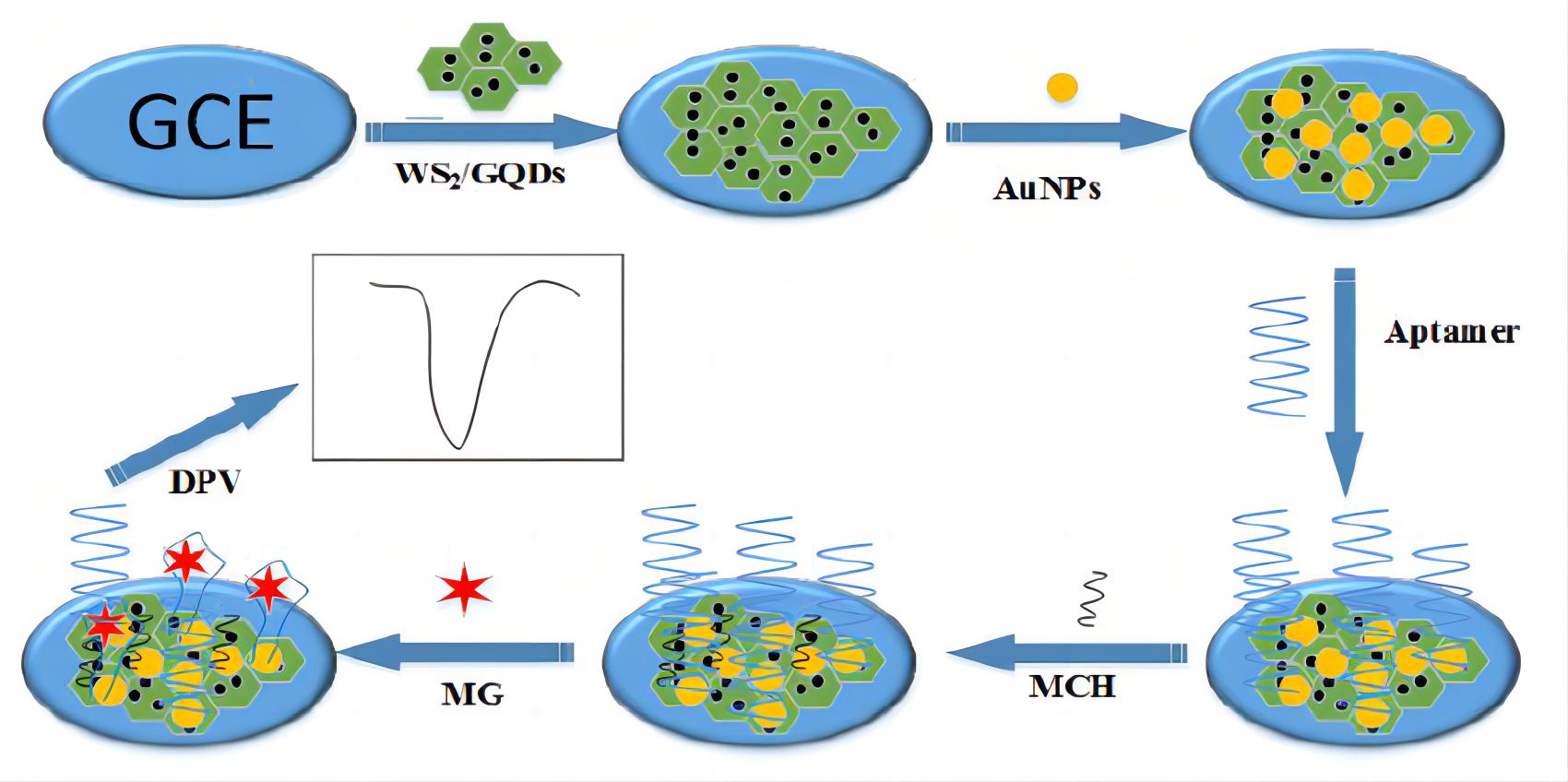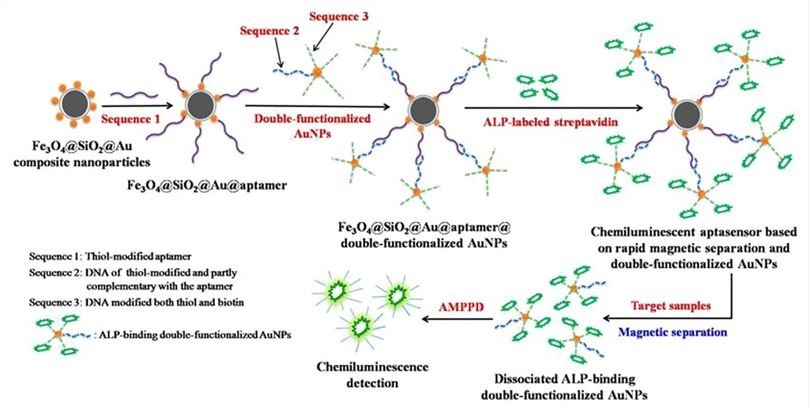Aptamers can be engineered into sensors as biorecognition elements in diagnostics, drug discovery and therapy. Biosensors that utilize aptamers as biorecognition elements are known as aptasensors. Many signal transduction strategies such as colorimetry, chemiluminometry (CL), electrochemistry, fluorometry, surface plasmon resonance (SPR) have been applied for the aptasensor development for different analytes. Among these strategies, CL detection techniques have become very popular in recent years.
Aptamer-based CL Sensors
CL is the emission of luminescence that results from a chemical reaction without using an external light source or optics. CL assay has significant advantages such as low detection limits, high sensitivity, wide linear dynamic ranges, simple instrumentation, low cost and good speed of response. Additional, the biological enzyme or biomolecule-modified nanoparticles (NPs) as signal amplification units are increasingly widely used in the construction of the sensor, leading to improved detection sensitivity. Aptamer-based CL sensors have been successfully used for the detection of metal ions (K+, Pb2+, Hg2+, Pt2+), protein, small molecules (adenosine, cocaine, toxin, cell, miRNA).
Label-free aptasensor and AuNPs-labeled aptasensor for OTA Detection
It was reported that two kinds of CL aptasensors for Ochratoxin A (OTA) detection were constructed using magnetic microsphere (MBs) as separated carrier. For the label-free aptasensor, in presence of the OTA, the OTA aptamer specially bound with it, and this affinity function was stronger than hybridization interaction between OTA aptamer and the paired sequence (capture probe) and resulted in the quantitative reduction of aptamers that bound to the capture probe on the MBs. Therefore, according to the CL signals changes which came from the transient reaction between guanine (G) in the OTA aptamer sequence and phenylglyoxal (PG), the OTA could be rapidly detected.
On the other hand, another AuNPs-labeled aptasensor was also designed. OTA could be sensitively determined with the CL signals which were generated by AuNPs catalyzing luminol chemiluminescence.
 Fig.1 Workflow of a label-free electrochemical aptasensor.1, 3
Fig.1 Workflow of a label-free electrochemical aptasensor.1, 3
Taking HBV detection for instance, HBsAg is the first serological marker to appear in the blood and HBsAg-specific aptamer was selected to develop a CL aptasensor based on rapid magnetic separation and double-functionalized AuNPs, which allows for rapid magnetic separation and highly sensitive detection of HBsAg in HBV-positive serum.
 Fig.2 Illustration of the CL aptasensor based on rapid magnetic separation and double-functionalized gold NPs.2, 3
Fig.2 Illustration of the CL aptasensor based on rapid magnetic separation and double-functionalized gold NPs.2, 3
So far, a variety of techniques in combination with a wide range of functional nanomaterials have been used for the design of aptasensors to further improve the sensitivity and detection limit of target determination. Creative Biolabs provides chemiluminescence-based aptasensor development services for global clients.If you are interested in our services, please feel free to contact us for more information.
References
- Gaudin, Valérie. "Contribution of nanomaterials to the development of electrochemical aptasensors for the detection of antimicrobial residues in food products." Chemosensors 9.4 (2021): 69.
- Xi, Zhijiang, et al. "Highly sensitive chemiluminescent aptasensor for detecting HBV infection based on rapid magnetic separation and double-functionalized gold nanoparticles." Scientific Reports 8.1 (2018): 9444.
- Distributed under Open Access license CC BY 4.0, without modification.
For Research Use Only.

